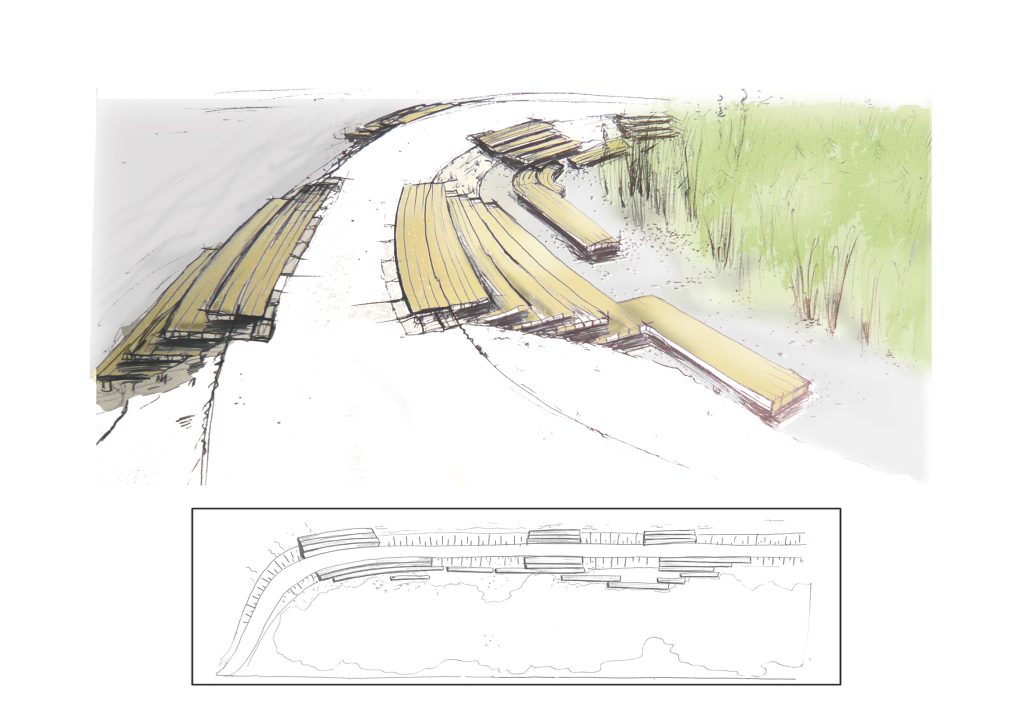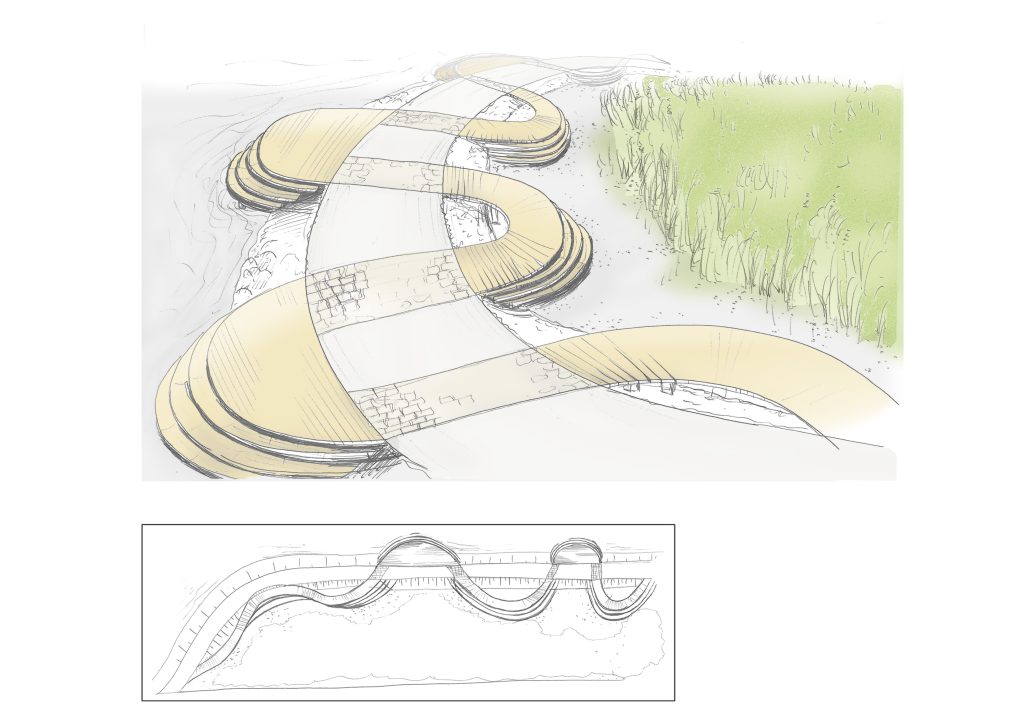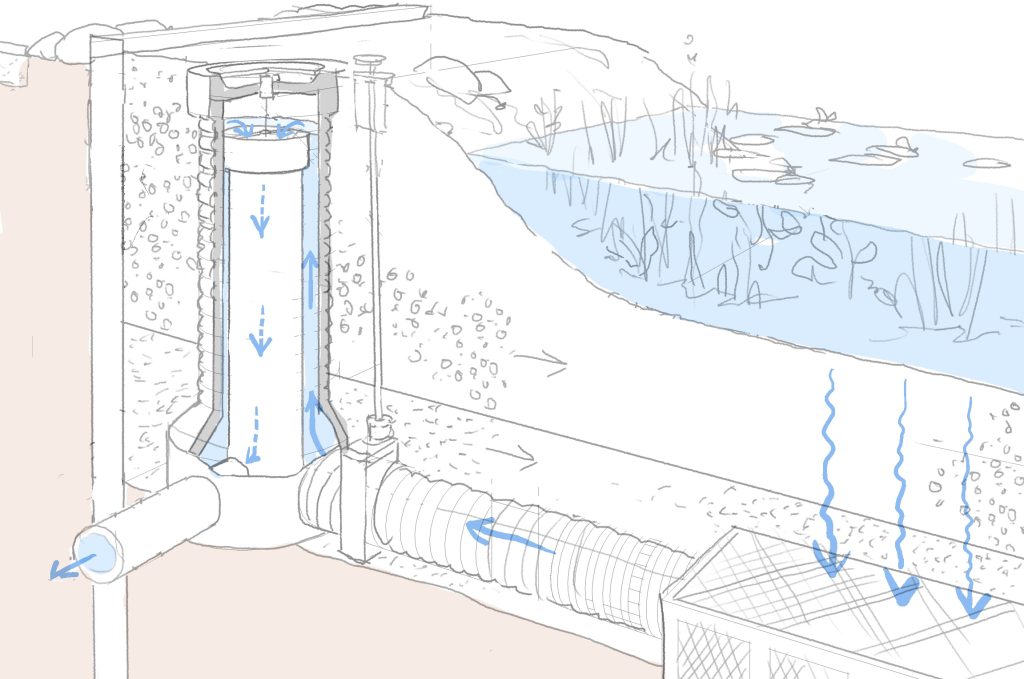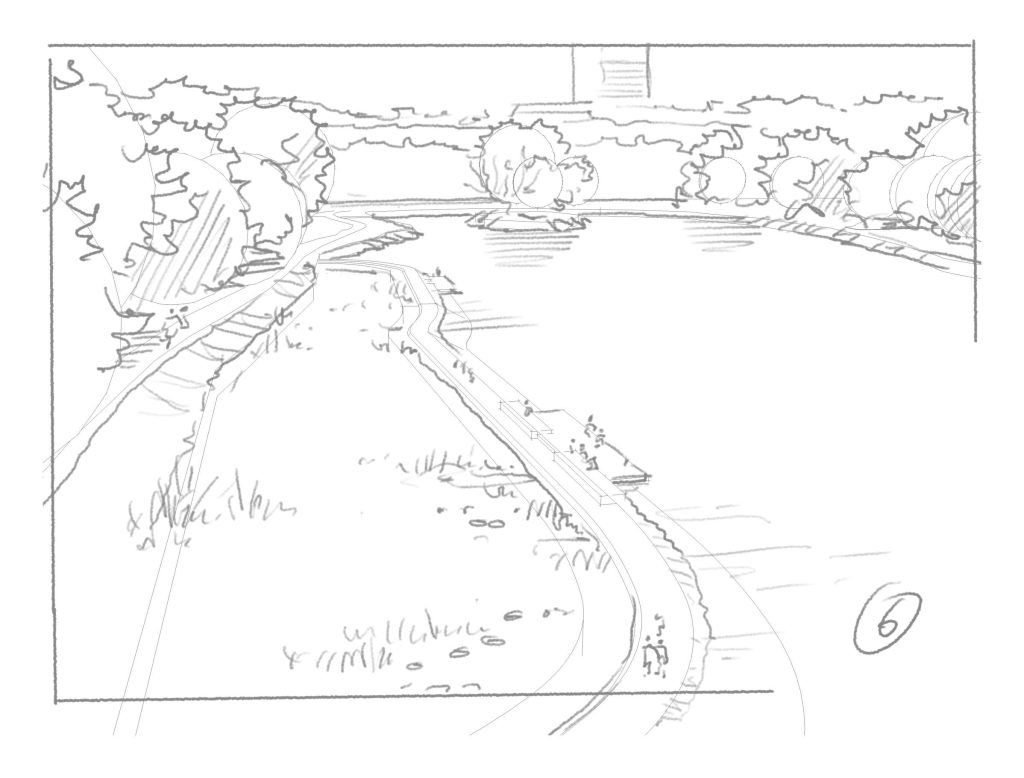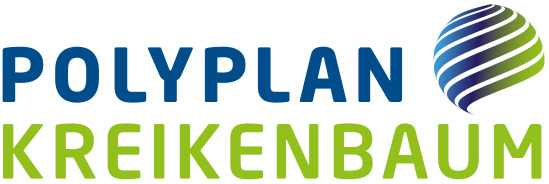Macrophytes (higher aquatic plants) and algae extract CO2 and HCO3 from the water by photosynthesis and release OH– ions into the water. This leads to changes in the lime-carbonic acid balance and which results in precipitation of calcium carbonate (CaCO3). This so-called biogenic lime precipitation and the release of OH– leads to an increase in the pH value, lower the calcium content, higher the performance of photosynthesis. This has an impact on all biocoenoses in the water body but especially on the aquatic fauna. High pH levels are a stress factor for the fish population. The characteristic water body type of the Alte Donau is pH-values in the range of 8 to 9, which is not a problem for the adapted fish biocoenosis. However, permanently elevated pH values (>9) and peak values around 10 can affect the fish biocoenosis and, in addition to temporary damage, this can also lead to increased failures or fish deaths in the worst case.
As a consequence of the intensive growth of macrophytes in the Alte Donau, which started in 2002, the buffering capacity against photosynthesis-induced pH fluctuations in the water body has decreased. In the past, these processes did not play a significant role due to adequate buffering of the water body (Löffler 1988, Pall et al. 2003). The lime concentrations of the Alte Donau varied between about 40 and 60 mg L-1 during the year, the acid binding capacity was between 2.5 and 3.5 mmol L-1. As a result, pH values rose to just above 9 relatively rarely, even with high biomasses of submerged plants or planktonic algae, only for short periods of time. In 2003, pH values, especially in the Upper Alte Donau in connection with rapidly emerging macrophyte populations, indicated short-term increases to about 9.4 for the first time, while pH values in the Lower Alte Donau only reached maximum values of 8.8 (Fig. 2-1). In 2004, the trend towards elevated pH values continued, with the area between Wagramer Straße and “Birner Loch” in the Upper Alte Donau being particularly affected (Fig. 2-2). Here, maximum pH values were already 9.7, with elevated values now appearing both in May and throughout the summer. In 2005, pH value rose to just over 10 for the first time in this section of the Upper Alte Donau.
